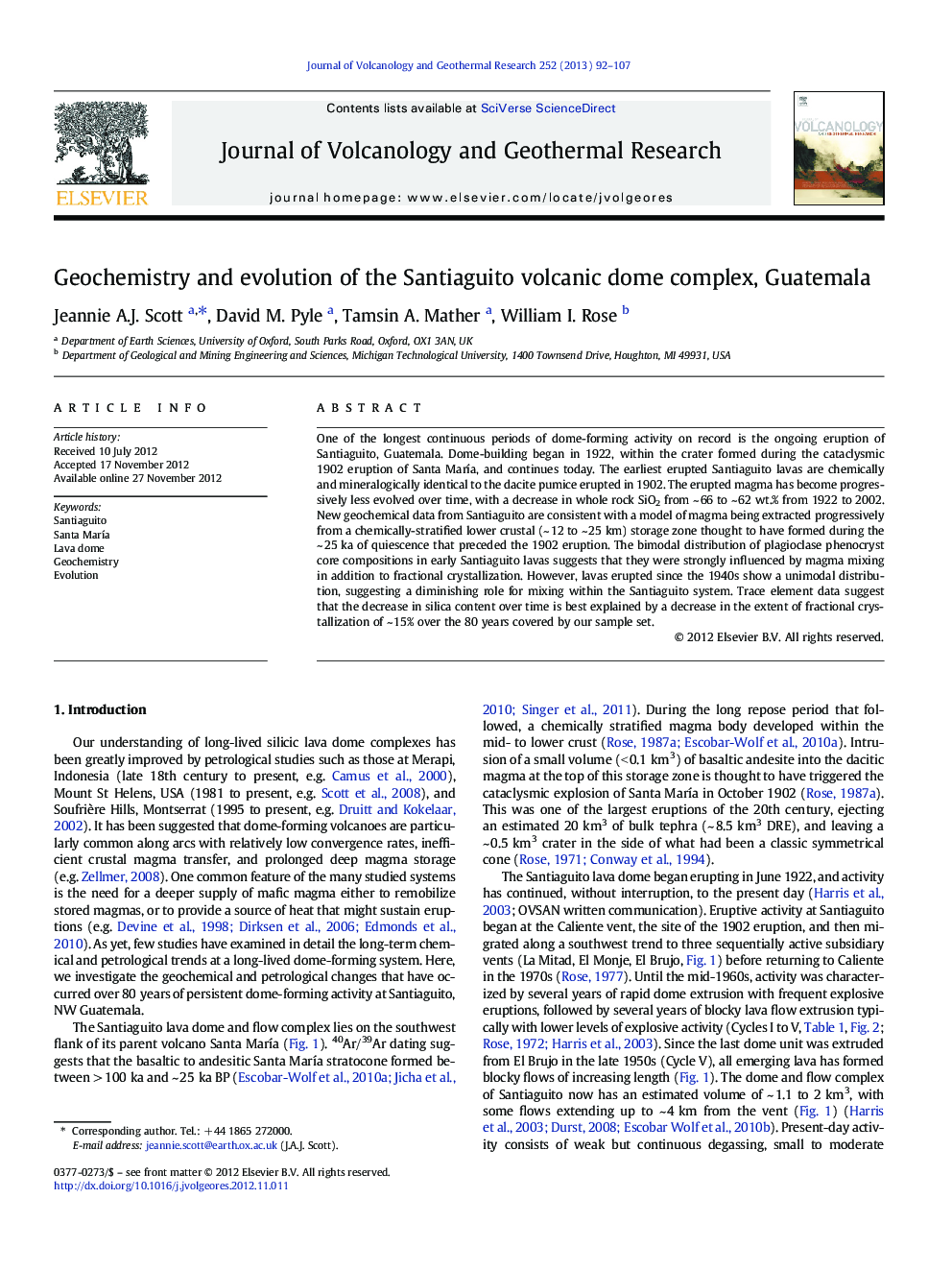| Article ID | Journal | Published Year | Pages | File Type |
|---|---|---|---|---|
| 4712533 | Journal of Volcanology and Geothermal Research | 2013 | 16 Pages |
One of the longest continuous periods of dome-forming activity on record is the ongoing eruption of Santiaguito, Guatemala. Dome-building began in 1922, within the crater formed during the cataclysmic 1902 eruption of Santa María, and continues today. The earliest erupted Santiaguito lavas are chemically and mineralogically identical to the dacite pumice erupted in 1902. The erupted magma has become progressively less evolved over time, with a decrease in whole rock SiO2 from ~ 66 to ~ 62 wt.% from 1922 to 2002. New geochemical data from Santiaguito are consistent with a model of magma being extracted progressively from a chemically-stratified lower crustal (~ 12 to ~ 25 km) storage zone thought to have formed during the ~ 25 ka of quiescence that preceded the 1902 eruption. The bimodal distribution of plagioclase phenocryst core compositions in early Santiaguito lavas suggests that they were strongly influenced by magma mixing in addition to fractional crystallization. However, lavas erupted since the 1940s show a unimodal distribution, suggesting a diminishing role for mixing within the Santiaguito system. Trace element data suggest that the decrease in silica content over time is best explained by a decrease in the extent of fractional crystallization of ~ 15% over the 80 years covered by our sample set.
► Early dome lavas were the degassed remnants of the Santa María 1902 magma body. ► SiO2 content of Santiaguito lavas decreased from ~ 66 wt.% in 1922 to ~ 62 wt.% in 2002. ► We examine changes in trace element data and plagioclase core compositions over time. ► The extent of fractional crystallization may have decreased by ~ 15% over ~ 80 years. ► The decreasing SiO2 of Santiaguito lavas cannot be explained solely by magma mixing.
